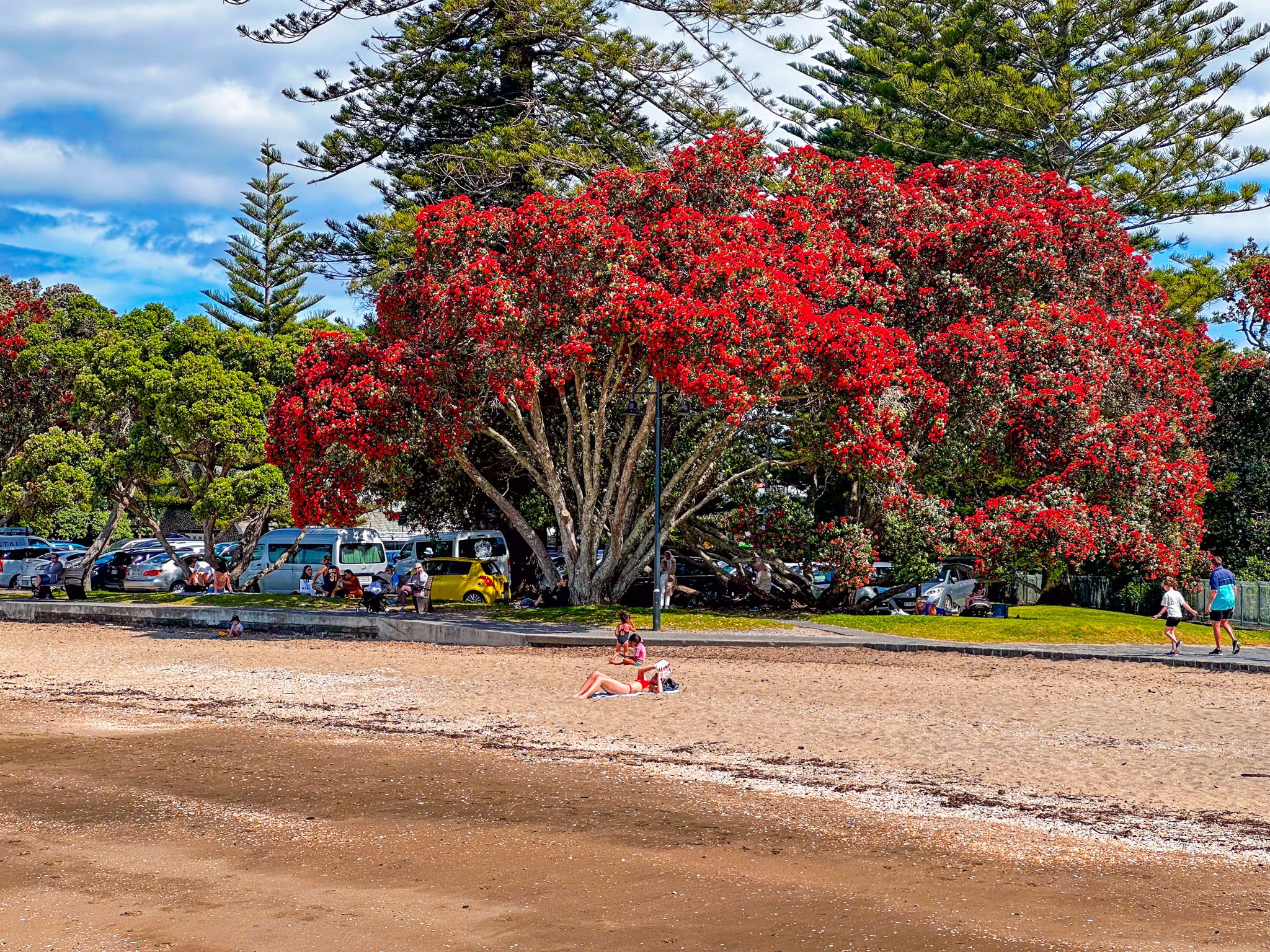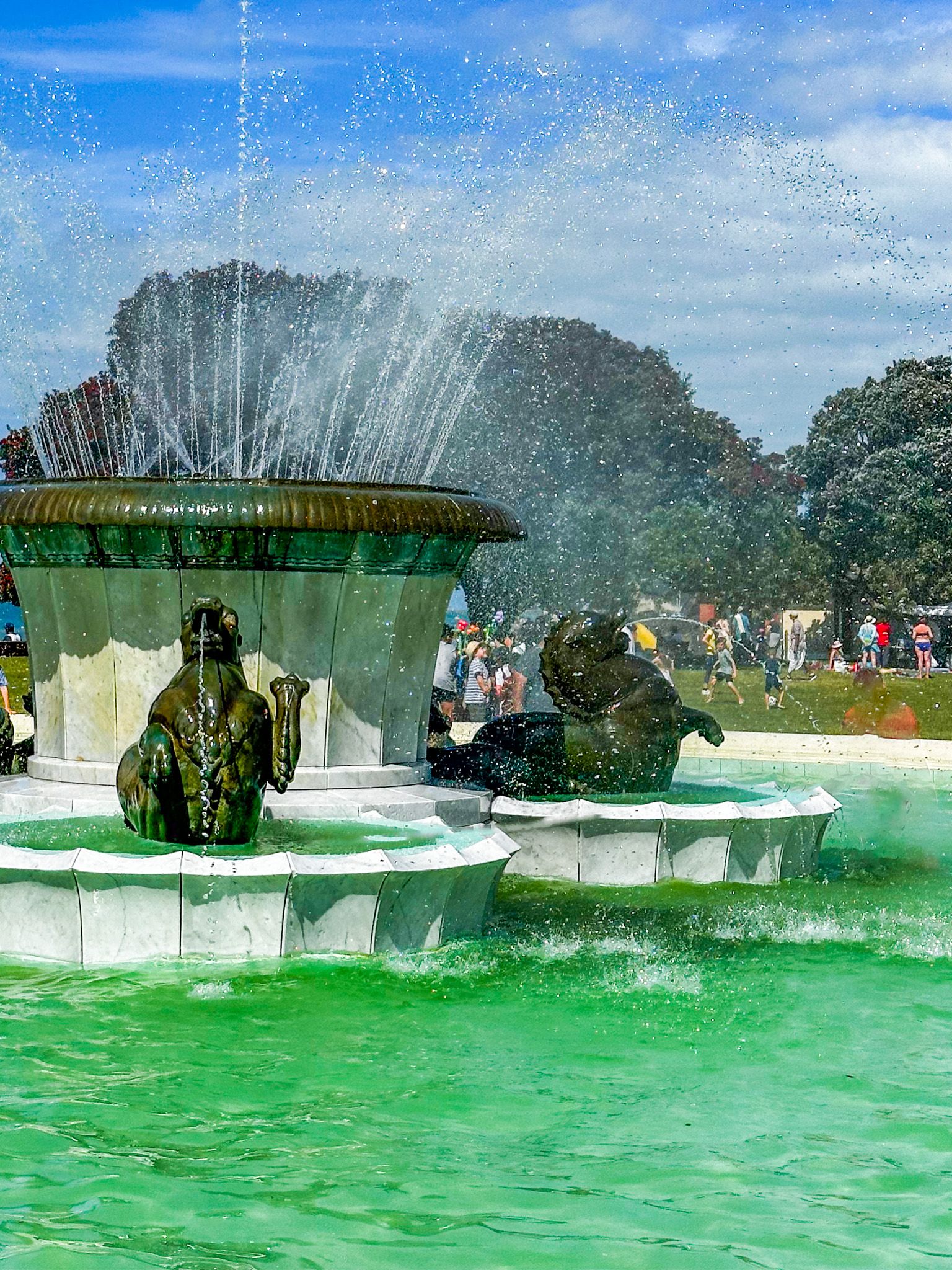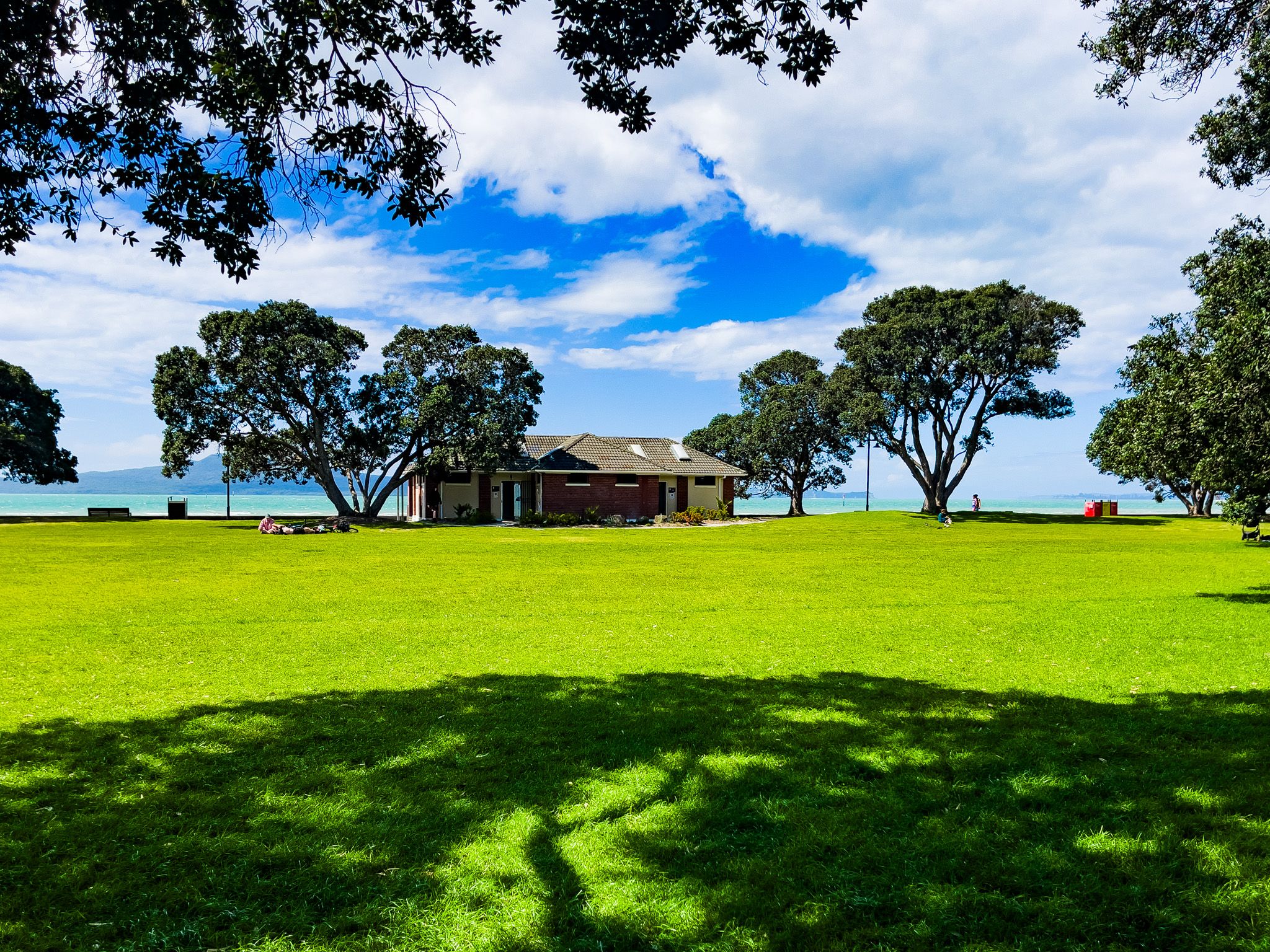Mission Bay is one of the four main beaches and seaside suburbs on the Watamatā Harbour in Auckland’s eastern bays. The 600-metre beach, with orange to gold-tinged sand lined with pōhutukawa trees, is located alongside Tamaki Drive, south of Rangitoto Island. Bastion Point is at the bay’s west end, and Pipitea Point is at its east end, after which is Kohimarama Beach. A large grass reserve, Selwyn Reserve, is between the beach and Tamaki Drive, with various shops and eateries off Mission Bay village on the south side. The bay is safe for swimming and extremely popular in nice weather when the easiest way to get there is on foot or by bike!
Mission Bay was part of a large land purchase east of Bastion Point and Ōrakei in Auckland by Anglican Bishop George Selwyn to establish the St Johns College of Auckland. For a while, the area was also known as Bishops Auckland. The college was developed in the 1840s in what is now the nearby suburb of St Johns. In 1858, Selwyn set up the Melanesian Mission next to the beach, giving Mission Bay its name. A school building made out of stone quarried from Rangitoto was built and is still in use as a restaurant in Selwyn Reserve, next to the beach, today. The architectural style was Tudor Revival, reflected in steep-pitched roofs and square-headed windows. The mission was in place until the late 1860s when it was moved to Melanesia.
In 1860, the mission buildings were used by Governor Colonel Thomas Browne for the Kohimarama Conference. The government’s objectives were to convince the 100 rangatira from iwi throughout NZ to reject Kingitanga, the Māori King Movement, and to justify the government’s war in Taranaki. In practice, the conference lasted for a month. Māori and the government affirmed the Treaty of Waitangi, thus reassuring the government that Māori would generally support it rather than the new Māori king. It was the first time since the signing of the Treaty of Waitangi in 1840 that many of the parties sat down to discuss its future. It was also agreed that the process should be repeated every two years, but this never happened, and the reaffirmation came to nothing much.
Mission Bay continued to be a relatively distant part of Auckland into the early 1900s, but it was used by the Walsh Brothers New Zealand Flying School in 1915. The school continued flying seaplanes from the bay until 1924, and over 1,000 pilots were trained. Subdivision of the land finally began around 1919, creating the suburb of Mission Bay, with the setting aside of Selwyn Reserve. It was connected with Downtown and the other eastern bays by Tamaki Drive in 1928.
A feature of Selwyn Reserve is the Trevor Moss Davis Memorial Fountain. Trevor was an Auckland businessman who died at the age of 45. His father, Eliot Davis (a nephew of Sir Ernest Davis, Auckland's mayor from 1935 to 1945), commissioned the fountain in his son's memory. The fountain is made of Sicilian marble, fluted to reflect light. Three bronze sea monsters squirt water, and the main jet gets up to 12 metres high. It is extravagant by Auckland standards and very popular as a paddling pool.











